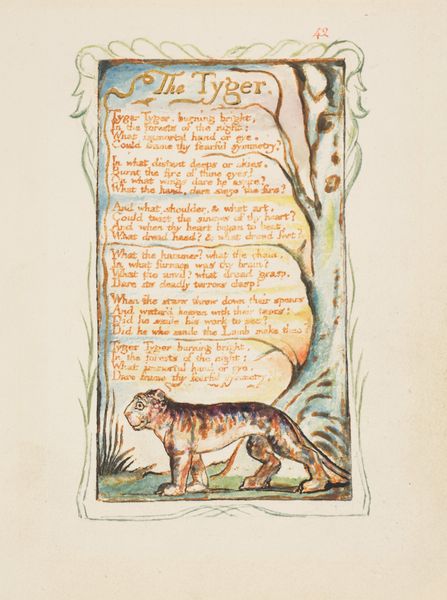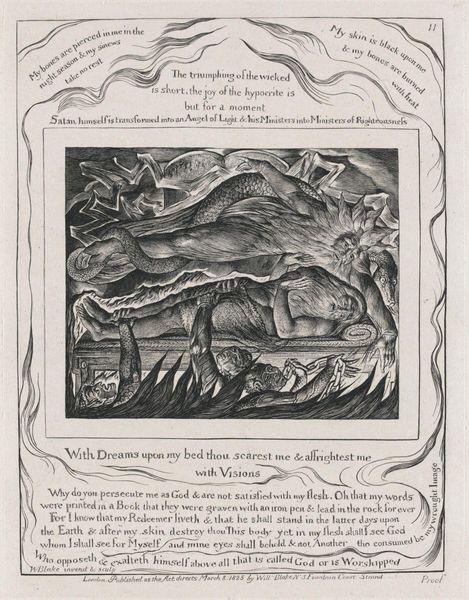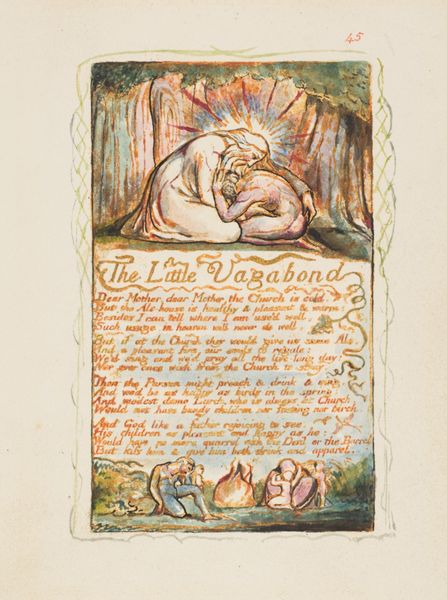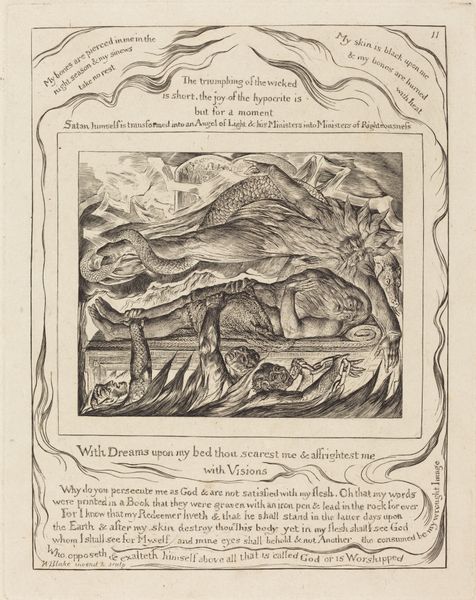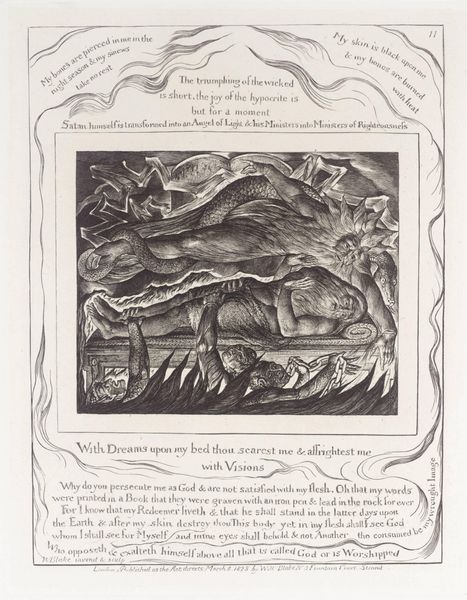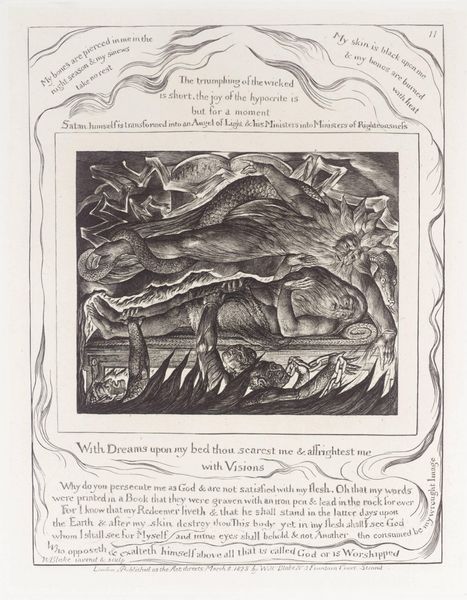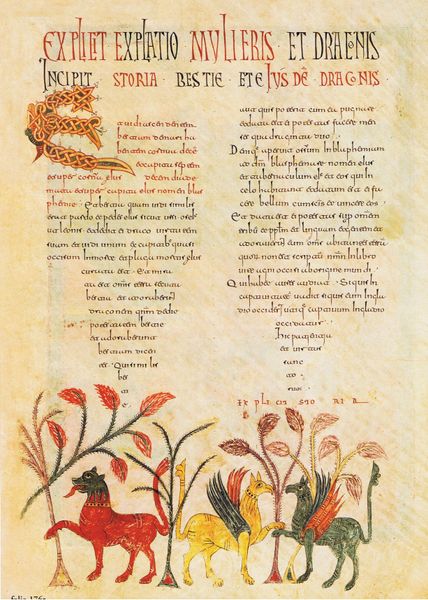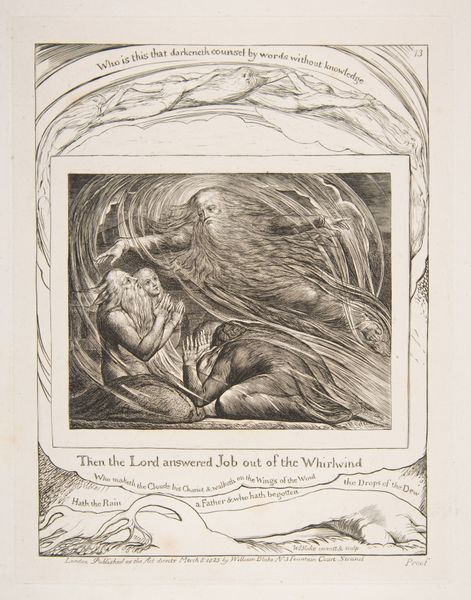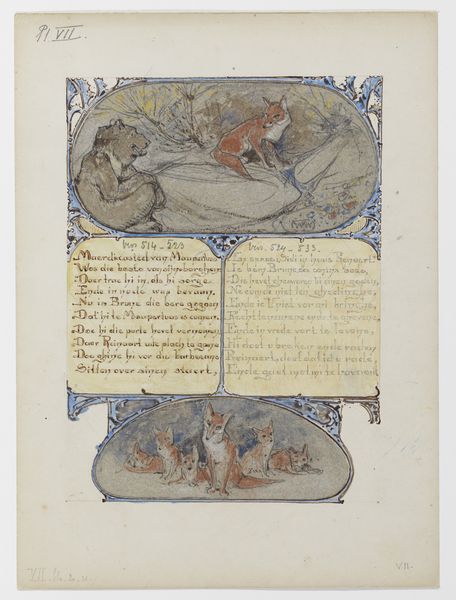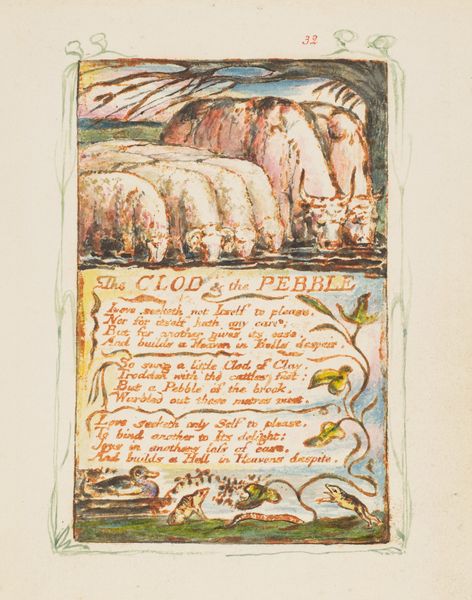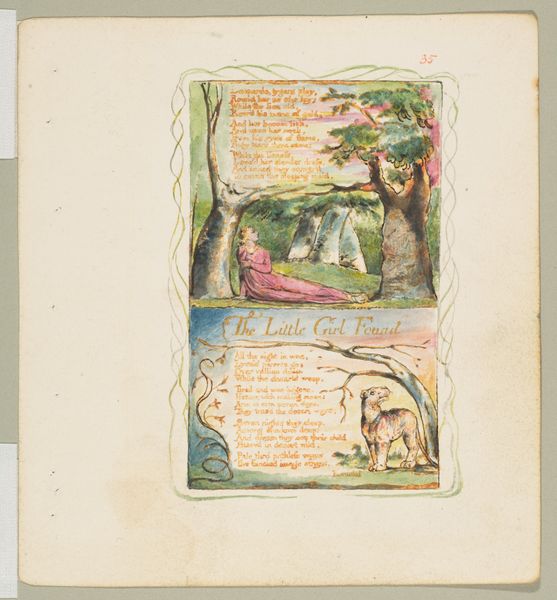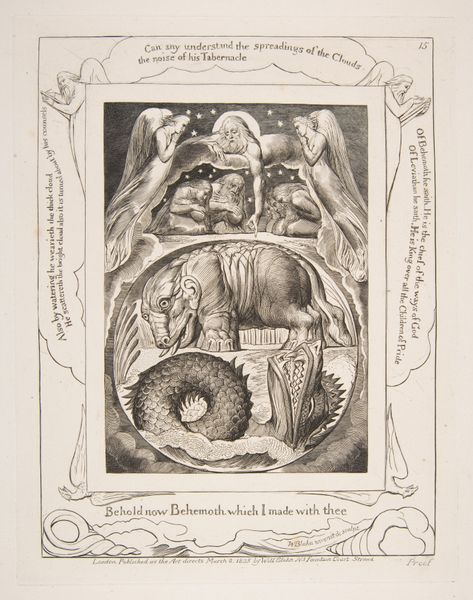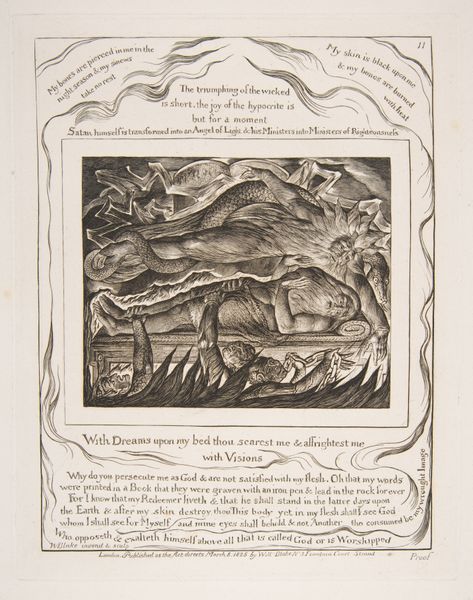
#
narrative-art
#
comic strip
# print
#
arts-&-crafts-movement
#
old engraving style
#
figuration
#
personal sketchbook
#
illustrative and welcoming imagery
#
folk-art
#
line
#
pen work
Copyright: Public Domain: Artvee
Curator: Look at this engaging print from 1908 by Walter Crane entitled "Porcupine, Snake and Company, The Bear and the Bees". Editor: It strikes me immediately as a sort of sequential fable, rendered with such charmingly simple linework. There's a real clarity of storytelling in the way Crane divides the scenes. Curator: Exactly. Crane was deeply involved in the Arts and Crafts movement, and his dedication to accessible, handcrafted art shines through here. Note how the medium, a humble print, democratizes the art form. Editor: Absolutely, it feels intended for wide distribution, possibly even children, considering the narrative content. You can see a visual hierarchy playing out, especially if the format suggests how Crane envisions its audience. How did socio-political contexts influence the kind of narrative that’s communicated? Curator: Well, the narrative's presentation is telling. Crane worked across many forms, from painting to illustrating children's books, and saw no distinction between applied and fine arts. Consider the materials used—printing was becoming increasingly mechanized but maintained an ethos valuing the artisan's touch. Editor: So the printed medium becomes almost like a commentary on the Industrial Revolution, championing accessible forms that can promote social critique within even the humblest of homes. Curator: Precisely. Think about the distribution. Cheaply produced prints spread Crane's social commentary widely. He aimed to counteract what he perceived as the dehumanizing effects of industrial production. Editor: These small works seem to hint that narratives might teach about society as a whole, reaching across classes by means of its design and distribution. It speaks volumes, doesn't it? Curator: It does, underscoring that even everyday items held profound social and artistic value in this era. The legacy continues. Editor: Yes, making one appreciate not only the piece but also the role of public art in shaping collective consciousness.
Comments
No comments
Be the first to comment and join the conversation on the ultimate creative platform.
